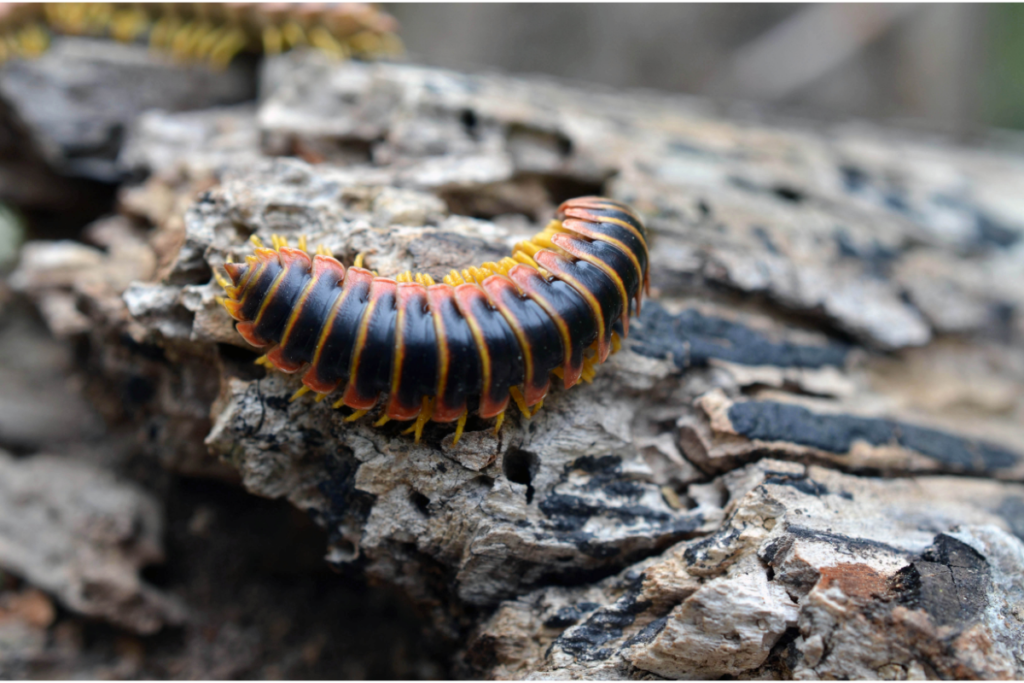Welcome back to the Lab!
Arthropods are some of the oldest living animals on the planet. That is to say, they appear in the fossil record before any other land animal. In a study published in February of 2020, scientists have uncovered a fossil revealing the world’s oldest “bug.”

As it turns out (and was expected) the world’s oldest land ‘bug’ is a millipede relative, but new techniques in dating technology reveal some interesting insights about the evolution of arthropods and insects.
The fossil hails from Kerrera, Scotland, and dates back 425 million years. The species in question, an extinct millipede relative known as Kampecaris obanensis, was discovered in 1899. The fossil is small, about an inch long. So if we’ve had this fossil around for so long, why are we just now gaining new insight into its true age and what does that mean about the evolution of insects?

The dating technology used to identify the true age of this fossil is known as “zircon dating;” it separates “zircons,” small, durable mineral grains from the surrounding sediment and dates them using radiometric dating. The process of separating the zicons is tedious, and a reliable method was only recently developed by an undergraduate at the University of Texas’ Jackson School of Geosciences.
Using this technology, researchers were able identify the true age of the millipede fossil: 425 million years old. So what does this mean for the evolution of insects and other arthropods?

For starters, other fossil evidence shows that insects were widespread by 407 million years ago, meaning that insect evolution and species radiation happened in the span of about 40 million years. In paleontological terms, that’s fast. Very fast.
But could there be older fossils out there, waiting for us to accurately date them? Maybe insects didn’t evolve that quickly, we just haven’t found the oldest fossils. The authors of this study don’t think so. They claim that “older bug fossils have not been found in older deposits that are known to preserve other delicate fossils.”
This newer method of fossil dating directly contradicts other dating techniques like molecular clock dating, which dates fossils based on the rate of DNA mutation. Using molecular clock dating, millipedes could be several million years older than this recent study suggests.
So which method is more accurate, and how quickly did insects actually evolve? Only time will tell.
Until next time, thanks for visiting the lab!
Bug Wrangler Brenna
brenna@missoulabutterflyhouse.org
Want to revisit a previous Notes from the Lab issue? Check out our archive! Do you want to request a subject for an upcoming issue? Email me at the address above and put “Notes from the Lab” in the subject line.